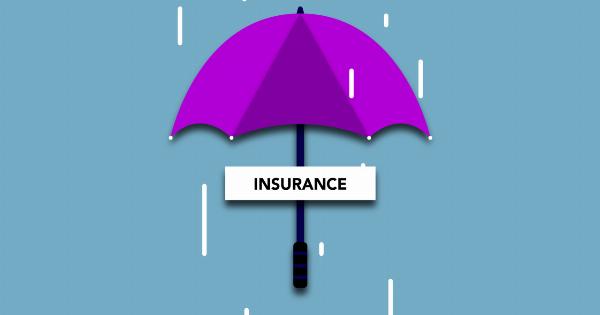When bad weather strikes, it is essential to be prepared and take necessary precautions to ensure your safety and well-being. One aspect that often gets overlooked is avoiding unnecessary downloads during these times.
In this article, we will explore the reasons why it is crucial to avoid downloads during bad weather and provide some practical tips to stay safe.
Understanding the Risks of Downloads
Downloading files and software can be risky on a regular day, but it becomes even more dangerous during bad weather. The following are some reasons why you should exercise caution when it comes to downloads:.
1. Unreliable Internet Connections
During severe weather conditions, internet connections might become unreliable or even go down altogether. Downloading large files or software updates can strain the already unstable connection, leading to frustration and wasted time.
It is best to prioritize essential online activities and refrain from unnecessary downloads until the weather stabilizes.
2. Electrical Outages
Bad weather often causes power outages, which can disrupt your downloading process. In the middle of a download, an abrupt power outage can corrupt files and even damage your computer.
Additionally, frequent power fluctuations during storms can harm your computer’s components. By avoiding downloads during bad weather, you reduce the risk of losing important data or experiencing hardware damage.
3. Increased Risk of Malware and Viruses
Malicious actors often take advantage of chaotic situations, such as severe weather events, to distribute malware and viruses. They might use deceptive download links or disguise harmful files as essential software updates.
By refraining from downloads during bad weather, you decrease the chances of accidentally downloading malware that could compromise your computer’s security.
4. Limited Technical Support
In case something goes wrong with your downloaded files or software during bad weather, getting timely technical support can be challenging. Service providers and helplines might be unavailable or understaffed due to the weather conditions.
Postponing downloads until a more convenient time ensures you have access to reliable technical assistance if needed.
Tips for Avoiding Downloads During Bad Weather
Now that you understand the risks associated with downloads during bad weather, it’s essential to implement some precautionary measures. The following tips will help you avoid unnecessary downloads and stay safe:.
1. Plan Ahead
If you are aware of an upcoming severe weather event, plan your downloads accordingly. Try to complete any critical downloads before the bad weather hits.
This way, you won’t have to worry about interruptions or risking your computer’s safety during the storm.
2. Prioritize Essential Updates
While it is advisable to avoid downloads altogether during bad weather, some updates might be crucial for your computer’s security or functionality.
In such cases, prioritize the essential updates and avoid downloading unnecessary files or software during this time.
3. Create Offline Backups
To protect your important files and documents, regularly create offline backups. By keeping offline copies, you can access and work on your files even during bad weather or when internet connectivity is compromised.
This step ensures that even in the event of a power outage or computer malfunction, your data remains safe and accessible.
4. Use Cloud Storage
Utilizing cloud storage services can provide an added layer of security during bad weather. Save your files and documents on reputable cloud platforms that offer automatic syncing and backup features.
This way, even if your local device gets damaged or inaccessible, you can retrieve your files from any internet-connected device.
5. Stay Updated with Weather Alerts
Stay informed about the weather conditions in your area through weather apps, news updates, or local authorities’ bulletins. If a severe storm or bad weather is forecasted, postpone any downloads until it is safe to proceed.
Prioritizing your safety over downloads is always the best course of action.
6. Wait for Stable Internet Connection
If you need to download a file urgently, wait until you have a stable internet connection. Check the weather reports for any improvements in the weather and make sure your internet connection is reliable before initiating any downloads.
7. Be Cautious with Email Attachments
Email attachments can be a common source of malware and viruses. Exercise caution while opening or downloading attachments during bad weather.
Unless you are expecting a specific attachment from a trusted source, avoid downloading attachments until the weather conditions improve.
8. Install Reliable Antivirus Software
Protecting your computer against malware and viruses is crucial, especially during bad weather when online threats may be more prevalent. Install reliable antivirus software and keep it updated to ensure maximum protection.
This will considerably reduce the risk of accidentally downloading malicious files.
9. Educate Yourself on Safe Download Practices
It is crucial to educate yourself about safe download practices, regardless of the weather conditions. Be familiar with the signs of potential malware, such as suspicious email addresses or untrustworthy websites.
Practice good cybersecurity habits, and always verify the authenticity and reputation of the download sources before initiating any downloads.
10. Follow Official Guidelines
If your government or local authorities issue guidelines or advisories regarding internet usage during bad weather, it is essential to follow them diligently.
These guidelines are designed to ensure public safety and mitigate potential risks associated with downloads during severe weather events.
Conclusion
Being prepared for bad weather extends beyond taking physical precautions.
Minimizing downloads during severe weather conditions can significantly reduce the risks associated with unreliable internet connections, electrical outages, malware, and limited technical support. By planning ahead, prioritizing essential updates, and following the precautionary tips outlined in this article, you can safeguard your computer, protect your data, and ensure a smooth experience even in the face of challenging weather conditions.





























